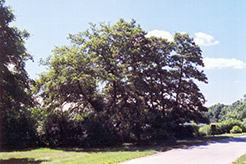Height: 45 feet
Spread: 25 feet
Sunlight:
![]()
![]()
Hardiness Zone: 5
Description:
One of the most refined of the alders, having a strong pyramidal shape; a good general purpose landscape tree where this shape is called for
Ornamental Features
Italian Alder is primarily valued in the landscape for its distinctively pyramidal habit of growth. It has forest green deciduous foliage. The oval leaves do not develop any appreciable fall color.
Landscape Attributes
Italian Alder is a deciduous tree with a distinctive and refined pyramidal form. Its average texture blends into the landscape, but can be balanced by one or two finer or coarser trees or shrubs for an effective composition.
This is a relatively low maintenance tree, and is best pruned in late winter once the threat of extreme cold has passed. It has no significant negative characteristics.
Italian Alder is recommended for the following landscape applications;
- Shade
- Vertical Accent
Planting & Growing
Italian Alder will grow to be about 45 feet tall at maturity, with a spread of 25 feet. It has a high canopy with a typical clearance of 6 feet from the ground, and should not be planted underneath power lines. As it matures, the lower branches of this tree can be strategically removed to create a high enough canopy to support unobstructed human traffic underneath. It grows at a fast rate, and under ideal conditions can be expected to live for 50 years or more.
This tree does best in full sun to partial shade. It is quite adaptable, prefering to grow in average to wet conditions, and will even tolerate some standing water. It is not particular as to soil type or pH. It is somewhat tolerant of urban pollution. Consider applying a thick mulch around the root zone in winter to protect it in exposed locations or colder microclimates. This species is not originally from North America.

